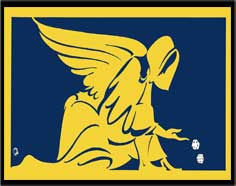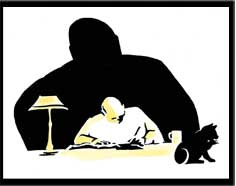Reviewing the evidence from the major drug importation cases of the 1970s leads to two conclusions: (1) Australian organized crime was definitely involved in the drug traffic, and (2) it had carried its traditional milieu-style of operations into the organization of its various drug smuggling ventures.
Instead of forming itself into a quasi-military hierarchy like the American Mafia, Australian organized crime operated in the 1970s, as it had for the previous half-century, on a closed-club system similar to the French-Corsican milieu of Marseilles. If the American Mafia was more efficient in executing a single operation, the milieu structure was more dynamic and resilient in the face of police pressure.
As Sydney’s criminal milieu, now far more syndicated than in the past, moved into the drug field during the 1970s, its networks mounted a continuing series of drug import and distribution ventures that overlapped and interlocked with each other at numerous levels. If we were to chart the overlapping lines of kinship, mateship and joint investment among those involved in all four major drug smuggling operations uncovered by police, it would appear as a great web of criss-crossing lines, rather like an anthropologist’s map of kinship links in an Asian village or a U.S. Senate investigator’s graph of interlocking company directorships shared among major New York banks.
A few examples will illustrate how Australia’s milieu style of organized crime operated in the illicit drug trade. First, all of those involved in organizing major drug trafficking ventures in the late 1970s had long-established reputations in other criminal fields, indicating something of a collective organized crime movement into the drug field during the late 1970s. Second, all of those involved in any single drug import operation had numerous links to individuals involved in all the other three, evidence that Australia’s drug imports were controlled by an exclusive milieu of professional criminals. Before launching their cannabis import venture in 1974-5, the Moylans had operated the 33 Club, Sydney’s leading illegal casino, for almost a decade and were close friends with organized crime figure Murray Riley. When one of the Moylans’ chief operatives was arrested in their absence, Riley posted $8,000 cash bail on his behalf.
Prior to his own involvement in the Anoa cannabis shipment in 1977-8, Murray Riley was active in a number of poker machine and registered club ventures which the Moffitt Royal Commission had found to have overtones of ‘organized crime’ activity. In his 1974 report on the poker machine industry Mr Justice Moffitt had warned that alliances between Australian and foreign criminal syndicates then involved in illegal gambling might ultimately serve to link Australia with the international narcotics traffic. It was a warning that became a prophecy. One of Riley’s associates in various club fraud ventures in the early 1970s was William Sinclair, arrested in 1978 on charges of heroin smuggling. As Sinclair moved his base to Bangkok in 1977-8, Riley began making frequent trips to Thailand to arrange the $46 million cannabis shipment. During their travels abroad both were identified with Wings Travel Pty Ltd, a company they had formed together. Significantly, only a few months separates Riley’s arrest for smuggling 4.7 tonnes of Thai marijuana, the largest cannabis seizure in Australia’s history, from Sinclair’s arrest for smuggling 8 kilograms of Thai heroin, again the largest narcotics seizure in Australian history. Given the mathematical odds against such a chain of coincidence in a city of three million people, the evidence of an organized crime link between the Riley and Sinclair drug operations is overwhelming.
Finally, all three groups had links to the ‘Double Bay mob’ which employed ‘Mr Asia’s’ murderous New Zealand network. The head of the ‘Double Bay mob’, for example, was believed to have invested heavily in Murray Riley’s Anoa yacht consignment. Moreover, there was discussion before the Drugs Royal Commission that Riley may have had direct contact with the New Zealand syndicate. Further, all those included in the management of these four groups had several direct links to the six or so more senior Sydney syndicate figures who worked purely at the level of arranging finance and corrupting police and political leaders.
The ‘Windsor Castle set’ seems to have been the only group active near the centre of Sydney’s drug distribution networks that was an exception to these rules. The alliance between organized crime networks and middle-class ‘trendies’ like James Sweetnam seems to have been a transitory one, exploited by milieu members to gain access to a universe of affluent middle-class youth that was otherwise closed to them. Once the trends were set and a constant demand for cannabis and heroin created, the Windsor Castle set was pushed aside and organized crime networks took full control of eastern Australia’s drug supply systems. Husbanding its capital and personnel for more essential import operations, the milieu’s networks continued to employ satellite groups like the Griffith Calabresi or New Zealand importers for exposed, high-risk elements of the trade.
While Sydney’s organized crime drug supply systems were both sophisticated and efficient, they were far more difficult to analyze and understand than their American Mafia counterparts. The American Mafia, with its clearly-defined hierarchy and quasi-military chain of command, lends itself readily to investigation. Neither Italian national police nor the American FBI have ever had difficulty in pinpointing Mafia leaders, or tracing their decisionmaking patterns. With their collegial style of leadership, the Australian and French-Corsican milieux are far more elusive targets for police analysis.
In Australia the difficulty of analysis is compounded by the fact that much of the New South Wales police hierarchy has refused to admit the existence of organized crime in Sydney, and simply failed, therefore, to study the problem. Lacking sufficient information about Australian organized crime, police investigators have tended to look to America for a model. Finding that the quasi-military American Mafia model does not fit Australian conditions, the various Royal Commissions have often blundered into obvious error like Mr William Fisher with his statements about the influence the Calabrian Onorata Societa, or his dismissal of Edward Smith’s testimony about ‘mafia’ control of the Sinclair heroin network.
Speaking at open hearings in Sydney in August 1979, after almost two years of costly investigations, Mr Justice Williams of the Federal Royal Commission into drugs admitted his confusion over the organized crime issue. Evidently unable to reconcile evidence of highly organized drug trafficking with police statements that only ‘medium-sized’ operators were involved, Mr Justice Williams, a man of considerable insight, expressed strong dissatisfaction with the quality of organized crime analysis he was being offered:
Everywhere I go I am told heroin — it does not matter whether it comes through Western Australia, Melbourne or Queensland — the bulk of it seems to find its way to Sydney before it is distributed back to these places.
In the next breath everybody agrees there are very few ‘Mr Bigs’ about. There are little operators, medium-sized operators, etc.
Why go to Sydney . . . 7 Does that not lead back to one inference — there is somebody bigger; big enough to want to be able or afford to get the whole thing under his or their wing. . .?
When Inspector Peter Lamb of the Commonwealth Police testified before the Federal Royal Commission in August 1979 about the results of ‘Operation Gaslight’, a special investigation into organized crime and drugs, he concluded: ‘From inquiry, there does not appear to be a ‘Mr Big’ of crime in Australia.’ Obviously dissatisfied with the implications of the inspector’s conclusions, Mr Justice Williams remarked that there were ‘plenty of Mr Big Enoughs’. While Inspector Lamb was looking for an American-style Mafia under the single ‘Mr Big’, Mr Justice Williams had found, without being aware of it, a Corsican-style milieu with its characteristic leadership by a number of ‘Mr Big Enoughs’. Mr Justice Williams had cracked the riddle of Sydney’s syndicate organization, and had made the first conceptual advance in the study of Australian organized crime since Mr Justice Moffitt released his pioneering report in 1974.
It was clear, then, that organized crime not only existed in Australia, but it had moved collectively into the drug traffic using its characteristic milieu-style of operations. In 1974 Mr Justice Moffitt had found organized crime operating in New South Wales and five years later Mr Justice Williams seemed inclined to the view that it was involved in drug traffic. If the close relation between drug importation and organized crime was largely understood, then two major questions remained: the means by which an adequate supply of Southeast Asian heroin became available for the Australian market, and, at the opposite end of the system, the patterns of addiction and street pushing at the bottom of the distribution chain in Australia.
from Drug Traffic by Alfred McCoy
[with one spelling change: Sweetman has been corrected to Sweetnam]





